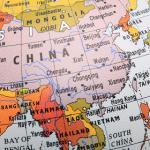Since 2018, India’s ‘Look East’ and ‘Act East’ policies have moved into the phase of Indo-Pacific policy and strategy, keeping pace with important geopolitical and geoeconomic developments in the region east and west of India. But what we in the national capital interpret as the ‘Indo-Pacific’ is quite different from the perceptions of this policy in Northeastern and Eastern India. There, the more important issues still are the need to ensure adequate security, speed up economic development, and connect better with the rest of India as well as the immediate neighbourhood comprising select South Asian and Southeast Asian nations. Hence an effective way to work for a ‘free, open, inclusive, peaceful and prosperous’ Indo-Pacific is to see how these five adjectives, often used by New Delhi, can be made applicable to the eastern region, especially the Northeast.
The Northeast comprising seven ‘sisters’ or states and one ‘brother’ – Sikkim – has been witnessing transformation as it heads towards better security conditions and the development that improves the lives of people. Much of the region awaits more progress. Recent participation in policy conversations in Imphal, the capital of Manipur – one of the four states bordering Myanmar – helped in clarifying the local needs and priorities. Separately, a set of wide-ranging interactions with the intelligentsia and artists in Kolkata shed light on how this major metropolis views the Indo-Pacific from the lens of culture and what it hopes to achieve through deeper exchanges with the East. A key takeaway is that by absorbing and factoring in the perspectives of stakeholders at the ground level, the Indo-Pacific policy may be able to deliver better results.
Both Indo-Pacific conclaves were hosted by the Asian Confluence, a remarkable think tank leading in the study of India’s Northeast. The first was in partnership with the Ministry of External Affairs and Manipur University, and the second had the US Consulate General in Kolkata as the partner.
The view from Manipur was that security conditions have improved significantly since the BJP came to power in Manipur in 2017. However, the core issues behind the insurgency remained unresolved. The way forward was to address them substantially and accelerate the pace of development. A notable contrast in security assessments of the authorities and others – academics, professionals, youth, and media – came to the fore. The official perspective was that the pernicious phenomena of smuggling, drug trafficking, transnational border crime, insurgent activity, and the influx of refugees (from Myanmar) represented serious non-traditional threats. China was viewed as a ‘constant player’ behind these nefarious activities. This has necessitated vigilance and strict action by the Assam Rifles and other security agencies.
Others representing local communities, however, expressed concern over the high-handedness and insensitive handling of those engaged in lawful exchanges with the neighbouring countries. A balanced view indicates that considerable scope exists for more effective and people-sensitive border management in the future.
The Northeast is on the right path to concentrate on economic development. More is awaited through improvement in roads linking the northeastern towns and job creation for thousands of graduates produced by local universities. Manipur needs to be promoted as the hub of medical tourism for other Indian states and neighbours like Myanmar. The state’s R&D facilities to leverage the region’s biodiversity should be expanded. Accelerated development requires increased investment by Indian corporates and foreign investors as well as better management, and the region is ready for it.
Chief Minister N. Biren Singh underscored the potential of the Northeast as the engine of growth for the country in the 21st century. He urged the strategic and business community to contribute to crafting a concrete blueprint for leveraging opportunities relating to commerce, connectivity, and human capital development.
At Kolkata, a large confluence of intellectuals and performers in the cultural domain from India, the US, Japan, Thailand, Sri Lanka, and Bangladesh reflected on the Indo-Pacific construct’s cultural dimensions. An ambitious endeavour by seventy-five artists from nine countries highlighted the region’s ‘unity in diversity’ through music, dance, drama, and cuisine. Clearly, expanding the reach of cultural diplomacy and people-to-people cooperation through greater educational exchanges, tourism, and trade is desirable. Harsh Vardhan Shringla, former foreign secretary, aptly stressed that the “shared culture, history and mutual social threads that tie the region with India is also an important component towards fostering regional cooperation.”
Md. Shahidul Haque, former foreign secretary of Bangladesh, holds the view that moving beyond geopolitics and geo-economics, neighbours should focus on “the geo-cultural dimension” of the Indo-Pacific. Diplomats from the region agree on the importance of expanded people-related cooperation, convinced that this would lead to wider acceptance of the Indo-Pacific, consolidation of the Quad, and stronger bilateral relations of their countries with India. US Consul General Melinda Pavek projected her country as being “a proud Indo-Pacific nation,” emphasizing that it was “incumbent on us to fortify our historical and geographic ties” to face future challenges. Indian participants echoed this by noting that culture is a vital enabler and driver of sustainable development.
Two common threads have emerged from recent exchanges. First, the growing significance of the Bay of Bengal region permeates the thinking of scholars. The concept of the Indo-Pacific seems distant and somewhat ambiguous, but the moment it is perceived as the outer circle of the Bay of Bengal and its littorals, it comes closer to home and makes much sense. Therefore, India and other member-states need to invest more in BIMSTEC to enhance its effectiveness.
Second, in implementing and refining India’s Indo-Pacific strategy, voices from the Northeast and eastern India should be heard with greater attention. This justifies regular dialogue and cooperation within the region, the rest of India, and select neighbours and partners.
Thus, beyond ‘Look East’ and ‘Act East’ lies ‘Think and Relate East’, especially within our own country.
Amb. Rajiv Bhatia is Distinguished Fellow, Foreign Policy Studies, Gateway House
A version of the article earlier appeared in The Hindu.


